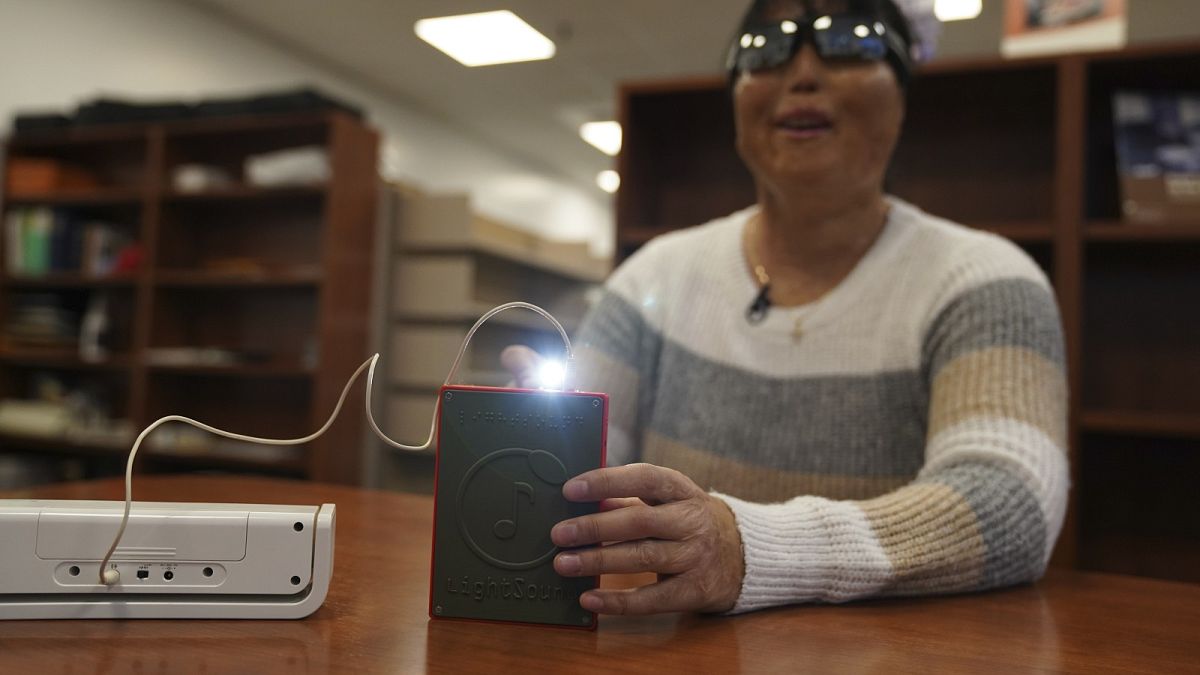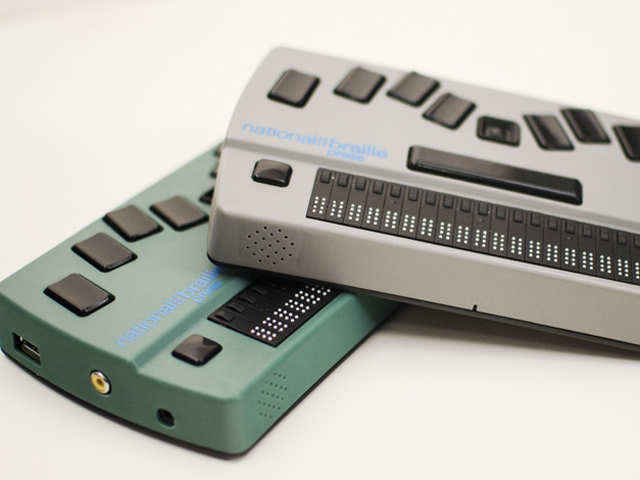Speech-to-Text Devices for Low Vision: Narrowing the Communication Gap
Speech-to-Text Devices for Low Vision: Narrowing the Communication Gap
Blog Article
Discover Ingenious Tools Made for the Aesthetically Damaged
The advancement of cutting-edge devices for the aesthetically impaired represents a significant development in ease of access and independence. Technologies such as clever glasses with AI capabilities and mobile applications developed to provide auditory summaries are reshaping daily experiences for individuals. Furthermore, wearable tools that utilize haptic responses enhance environmental recognition, while contemporary Braille developments supply brand-new methods to engage with message. As these devices continue to advance, their effect on the lives of those with aesthetic impairments elevates essential inquiries about the future of inclusivity and autonomy in numerous aspects of life. What lies in advance in this technological landscape?
Smart Glasses for Navigating

Smart glasses designed for navigation are reinventing the method visually damaged individuals engage with their atmosphere. These sophisticated devices make use of a combination of electronic camera technology, expert system, and auditory comments to supply real-time information regarding environments. By using obstacle discovery systems, wise glasses can alert users to prospective threats, making it possible for safer movement in both acquainted and unknown settings.
The assimilation of GPS innovation additionally boosts navigation abilities, enabling users to obtain acoustic directions as they move. This hands-free method not only promotes independence but also empowers aesthetically damaged people to browse metropolitan landscapes with raised confidence. Furthermore, several wise glasses are geared up with features that identify spots and street signs, offering contextual details that boosts the user experience.
Additionally, the development of these devices is continuously advancing, with business functioning to enhance the accuracy of object acknowledgment and broaden the series of navigational features. As smart glasses come to be more obtainable and inexpensive, they hold the possible to significantly change day-to-day live for aesthetically damaged users. Inevitably, these ingenious tools represent an important step towards inclusivity, offering improved movement and a greater feeling of freedom for individuals browsing the world around them.

Mobile Apps for Daily Living
Just how can mobile applications boost the daily lives of visually damaged people? Mobile apps are changing the means visually impaired customers browse their environments, manage day-to-day tasks, and access details. These applications give vital support with different capabilities, cultivating self-reliance and enhancing lifestyle.
A number of cutting-edge mobile applications are created particularly for everyday living. Applications like Be My Eyes link visually damaged individuals with sighted volunteers using video phone calls, allowing them to receive real-time aid with tasks such as checking out labels or navigating unfamiliar areas. Seeing AI, created by Microsoft, makes use of man-made intelligence to define surroundings, checked out text, and identify things, successfully changing a smart device right into an effective device for daily assistance.
Additionally, navigating applications tailored for the visually impaired, such as Aira and BlindSquare, provide audio-based instructions and environmental details, making it possible for users to traverse their environments securely and with confidence. Beyond navigating and immediate assistance, mobile apps additionally support organization and task administration, with features that assist users establish reminders, create order of business, and track visits. In recap, mobile applications act as crucial resources, encouraging aesthetically impaired individuals to lead more independent and satisfying lives.
Wearable Technologies for Support
Empowerment via innovation is significantly apparent in the world of wearable gadgets designed to help visually impaired individuals. These cutting-edge devices incorporate effortlessly right into daily life, boosting navigation and supplying necessary comments to users. Smart glasses equipped with cameras can check out and recognize faces message out loud, enabling users to engage even more with confidence in social and professional settings.
An additional remarkable innovation is using haptic responses systems in wearable devices. These systems use resonances or other responsive signals to share information regarding the individual's environment, such as obstacles or adjustments in terrain, enhancing wheelchair and safety and security. Wearable modern technologies also include wristbands that link to mobile phones, informing users to alerts through subtle resonances, thus enhancing connectivity without reliance on aesthetic hints.
As these technologies remain to develop, they are not just enhancing self-reliance for aesthetically impaired people but additionally cultivating a better feeling of addition in society. By connecting the gap in between challenges encountered in everyday living and the potential for autonomy, wearable modern technologies serve as essential devices in the pursuit for equality and empowerment for those with aesthetic impairments.
Audio Summary Tools
Audio description devices play a vital role in boosting access for visually impaired individuals, giving them with the capacity to engage with aesthetic media. Speech-to-text devices for low vision. These devices Home Page provide narrated descriptions of crucial visual components in movies, tv shows, and live efficiencies, ensuring that customers can totally comprehend the context and feelings conveyed with visuals
Sound description can be incorporated into numerous systems, consisting of streaming services, cinema testings, and live movie theater. Lots of preferred streaming services currently include audio description as an accessibility attribute, permitting visitors to select it quickly. In enhancement to mainstream media, specialized applications additionally exist, giving audio descriptions for art events, galleries, and various other cultural occasions.
The efficiency of audio summary hinges on the ability of the storytellers, that need to convey visual information succinctly without taking away from the initial audio. Innovations in this field are also leading the way for more individualized experiences, where customers can change the degree of information and pacing according to their choices.
Braille Innovations and Devices
Braille devices and technologies have significantly changed the way visually impaired individuals connect with message and info. Modern innovations have actually led to the development of versatile devices that boost proficiency and independence among individuals.
In addition, portable Braille notetakers combine typical Braille input with contemporary capabilities, facilitating note-taking, organizing, and file editing and enhancing on the move. Mobility aids visit our website for visually impaired users. These small gadgets typically feature text-to-speech capacities, connecting the space in between Braille and auditory information
Additionally, ingenious Braille printers have arised, enabling users to create Braille labels, documents, and instructional products successfully. This access promotes better engagement in academic and expert environments, inevitably promoting inclusivity.
In addition, study into smart Braille technologies remains to increase. Devices that include expert system are being explored to provide real-time navigating assistance and contextual information, boosting the individual experience in diverse settings. Generally, these advancements reflect a commitment to empowering aesthetically impaired people with modern technology, ensuring they can easily access and involve with the world around them.

Conclusion
The innovation of ingenious tools for the visually damaged considerably enhances freedom and quality of life. These technologies not just foster greater inclusion however also advertise autonomy in daily activities, inevitably contributing to a much more equitable and obtainable society for aesthetically damaged individuals.
As wise glasses become a lot more affordable and Look At This easily accessible, they hold the potential to substantially change day-to-day life for visually impaired individuals. Mobile apps are transforming the means visually impaired individuals navigate their atmospheres, handle day-to-day jobs, and access info. Applications like Be My Eyes connect visually impaired individuals with sighted volunteers by means of video clip phone calls, enabling them to obtain real-time assistance with tasks such as reviewing labels or navigating unknown spaces.In addition, navigation apps tailored for the aesthetically impaired, such as Aira and BlindSquare, offer audio-based instructions and ecological details, enabling users to traverse their environments securely and with confidence.The advancement of cutting-edge tools for the aesthetically impaired considerably enhances self-reliance and high quality of life.
Report this page